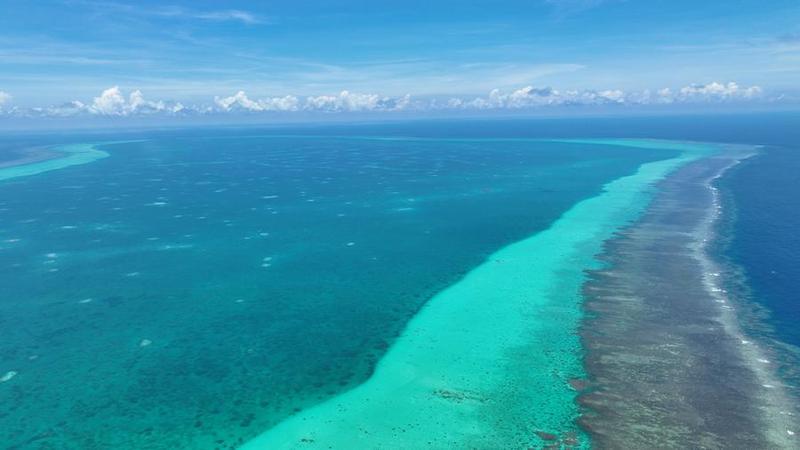Making Of A Frankenstein China And How To Tame It
The gradual metamorphism of present-day massive ‘Peoples Republic of China’ (PRC) from a petty and fractured ‘Republic of China’ (ROC) of 1912 is not the result of an unplanned game or some random and accidental historic happenings. Just before the emergence of the ROC in 1912, China was a severely fractured country – so much so that even some of its own colonized parts (occupied by Japan and Portugal)did not share their borders with the mainland China. For over a century, now remembered as the ‘Century of Shame’ by the Chinese people and their leaders, many parts of China were controlled by the colonial masters from France, Portugal, Japan, Britain, Germany and even Manchuria remained divided between Russia and Japan.
It is interesting to note that in the post-1912 period,despite ongoing civil war and power struggle within the newly found Republic of China,China’s rulers occupied Southern Mongolia in 1919 by claiming that it was ‘Inner Mongolia’ and a part of China. In later years, assimilation of Manchuria into China in 1945; occupation of East Turkistan (renamed as ‘Xinjiang’) in 1949; and occupation of Tibet in 1951 simply shows that the Han mind has been always clear about its national agenda despite ongoing serious and bloody civil wars throughout this period. As a result of this colonial expansion China was able to stretch its borders to a dozen such countries with which it never shared borders at any stage of its history. These countries are Kazakhstan, Kyrgyzstan, Tajikistan, Afghanistan, Pakistan, India, Nepal, Sikkim, Bhutan, Korea, Russia and Japan
Even before Chairman Mao Zedong’s Communist Revolution succeeded in 1949, Mao had already announced his plans to grab Tibet. In later years of his ‘Long March’ during 1940she had openly declared “Tibet is China’s palm and Ladakh, Nepal, Sikkim, Bhutan and NEFA (now ‘Arunachal Pradesh’) are its fingers”. Through this declaration he had made China’s future plans clear not only about Tibet but also about India and rest of South Asia. But unfortunately the leaders of South Asia failed in understanding the seriousness of Mao’s plans.
Following occupation of Tibet and asserting that it is an ‘integral part of China’, Beijing started laying claims over lands of India, Nepal and Bhutan by claiming that those areas belonged to Tibet and hence are part of China. In the case of India, Beijing toady lays claims over a major part of its Arunachal Pradesh by branding it as ‘South Tibet’. After announcing Chinese names for 21 places of Arunachal in 2017 and 2021 Beijing assigned a Chinese name ‘Zangnan’ to this Indian state on April 4, 2023 besides renaming 11 more of its places. It should not be surprising if soon China comes out with some referenced to Tibet’s relations with Ladakh and start claiming entire Ladakh as a part of China.
The most basic issue which appears to be the mother of most of Chinese narratives and myths is China’s communist rulers’ insistence about PRC being the ‘real’ and ‘original’ China. Interestingly, the present communist China’s narrative does not stop here. Its new and rewritten history now claims that the present day China is a result of ‘seamless succession of Chinese dynasties’. This fine art of rewriting history was at its best in 2004 when the Chinese government released an ambitious 40-episode mega epic TV serial ‘Genghis Khan’ on its national TV network – the CCTV. The main focus of this entire exercise was to appropriate Genghis Khan as a ‘Great son of China.’ This idea was also propagated aggressively through the promos of this epic on entire Chinese media. Interestingly, it was the same Genghis Khan who had founded the vast Mongol Empire in 13th century (1206) and his dynasty (also known as ‘Yuan’ dynasty) had ruled over China and many other countries of larger Asia and parts of Europe for more than 300 years. It was the Qing dynasty of Manchuria who later replaced the Mongols to subjugate the Ming Empire of the Han China. That makes it over seven century long history of subjugation and foreign occupation of China. The immediate goal of this Chinese narrative is to make the world believe that it was not the Mongols and the Manchurians who occupied China along with many other parts of Asia, but it was China who ruled over vast areas of Asia and adjoining regions of Europe through these ‘great sons of China’.
China’s communist history rewriters are now in their overdrive to establish that in addition to the Song and Ming Empires of Han China the Mongol Empire and the Manchu Empire too were ‘Chinese’ Empires and hence the present day PRC is a product of ‘seamless succession’ of these ‘Chinese’ dynasties. Once established, this narrative is surely going to provide a logical ground for the Beijing rulers to not only legitimize their colonial occupation of Tibet, East Turkistan and a part of Mongolia but it will also open doors for fortifying China’s claims over many parts of Russia, Europe and those countries of Central and South-East Asia which were conquered by the Mongols or the Manchus at some stage of history.
China’s current eagerness to include Tibet, Xinjiang and Hong Kong into its list of ‘core interests’ and its extra ordinary sensitivity and claims about Tibet and Xinjiang as ‘integral’ parts of China only expose Beijing leaderships’ sense of guilt about their colonial control over these two countries. This is despite the fact thatthese countries existed as independent countries, free of any Chinese control at least since China gained its independent personality as the ‘Republic of China’ in 1912. This sensitivity of Beijing is understandable because loss of China’s control over these colonies or their return to their original independent status is bound to derail China’s expansionist dreams of becoming the ‘Middle Kingdom’. With Tibet and Xinjiang regaining their independent status Beijing will not only lose its recently acquired contiguity with South and Central Asia, it will also lose its dominance on these two major parts of Asia. If the world community wants to put a halt on the aggressive and belligerent postures of Beijing leaders then it will have to understand the hollowness of their narratives and adopt a common strategy to take China head on to fight these narratives.












